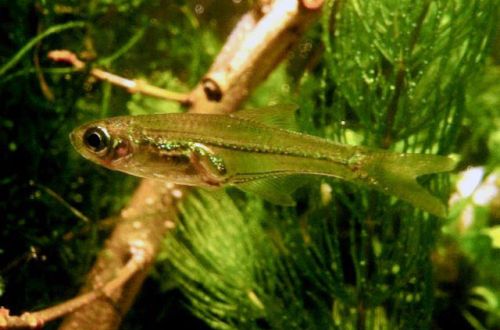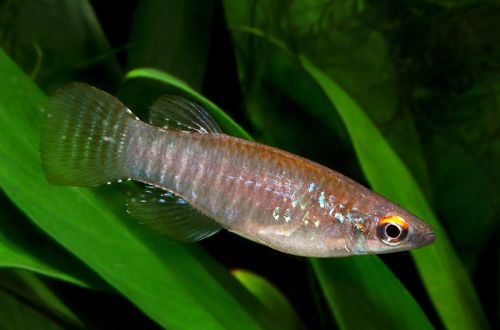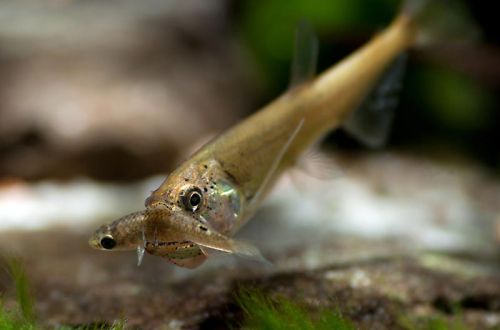
Daniel Gates
Gates’ zebrafish, scientific name Microdevario gatesi, belongs to the Cyprinidae family. Named after Gordon E. Gates who discovered this species. Until 2009, it belonged to the Rasbor group and had the name Burmese golden rasbora, which is still sometimes found. It is considered easy to keep and breed, perfectly compatible with other miniature fish.

Contents
Habitat
It comes from Southeast Asia from the territory of southern Myanmar (Burma). It is believed to be endemic to the Irrawaddy Delta where it flows into the Andaman Sea. The Irrawaddy Delta is very flat with a height difference of no more than 15 meters from sea level. The flat swampy area is dotted with many small channels with dense vegetation. The water is cloudy due to suspended silt and may be slightly brackish.
Brief information:
- The volume of the aquarium – from 40 liters.
- Temperature – 20-27°C
- Value pH — 6.0–7.5
- Water hardness – 1–12 dGH
- Substrate type – any soft
- Lighting – subdued
- Brackish water – no
- Water movement – light or moderate
- The size of the fish is about 2 cm.
- Feeding – any food of suitable size
- Temperament – peaceful
- Keeping in a group of 8-10 individuals
Description
Adult individuals reach a length of about 2 cm. The fish has a translucent body, through which the silhouette of the ridge and internal organs clearly appears. Depending on the lighting, it may appear golden or silver. Sexual dimorphism is weakly expressed. Males and females are practically indistinguishable.
Food
In the home aquarium, it will accept such popular types of food as dry flakes, granules of a suitable size, frozen or live daphnia, brine shrimp, pieces of bloodworms. Herbal supplements such as spirulina flakes are recommended.
Maintenance and care, arrangement of the aquarium
Danio Gates can be kept in a relatively small aquarium with a volume of 40 liters or more with dense aquatic vegetation. The rest of the design is arbitrary. The lighting is subdued. A large number of living plants implies the presence of a productive aeration system. In the light, plants produce oxygen and absorb carbon dioxide during photosynthesis, but at night, the opposite is true – oxygen is absorbed, and this can potentially lead to suffocation in fish. To prevent this from happening, turn on the aerator at night.
Maintenance of the aquarium consists of several standard procedures, their order and number varies depending on the equipment and the number of inhabitants. At a minimum, it is necessary to carry out a weekly replacement of part of the water with fresh water, remove organic waste (feed residues, excrement), carry out preventive maintenance of equipment, etc.
Behavior and Compatibility
Peaceful schooling fish, able to get along with other freshwater species of comparable size and temperament. They prefer to be in a flock of 8-10 individuals.
Breeding / breeding
At the time of writing, there is no reliable information about the successful cases of breeding Danio Gates in an artificial environment. However, given the relationship with Kubotai Microrasbora, it can be assumed that reproduction occurs in a similar way.
In a favorable home aquarium environment, spawning occurs regularly. Fish scatter many eggs among plants and do not show parental care. After about 72 hours, the first fry appear from the eggs left to themselves. After another 3-4 days, they begin to swim freely.
It is worth noting that the survival rate of fry will be minimal if they are not transplanted into a separate tank in time. They fall prey to adult fish and also have difficulty finding suitable food.
Fish diseases
In a balanced aquarium ecosystem with species-specific conditions, diseases rarely occur. Often, diseases are caused by environmental degradation, contact with sick fish, and injuries. If this could not be avoided and the fish shows clear signs of illness, then medical treatment will be required. Read more about symptoms and treatments in the Aquarium Fish Diseases section.





